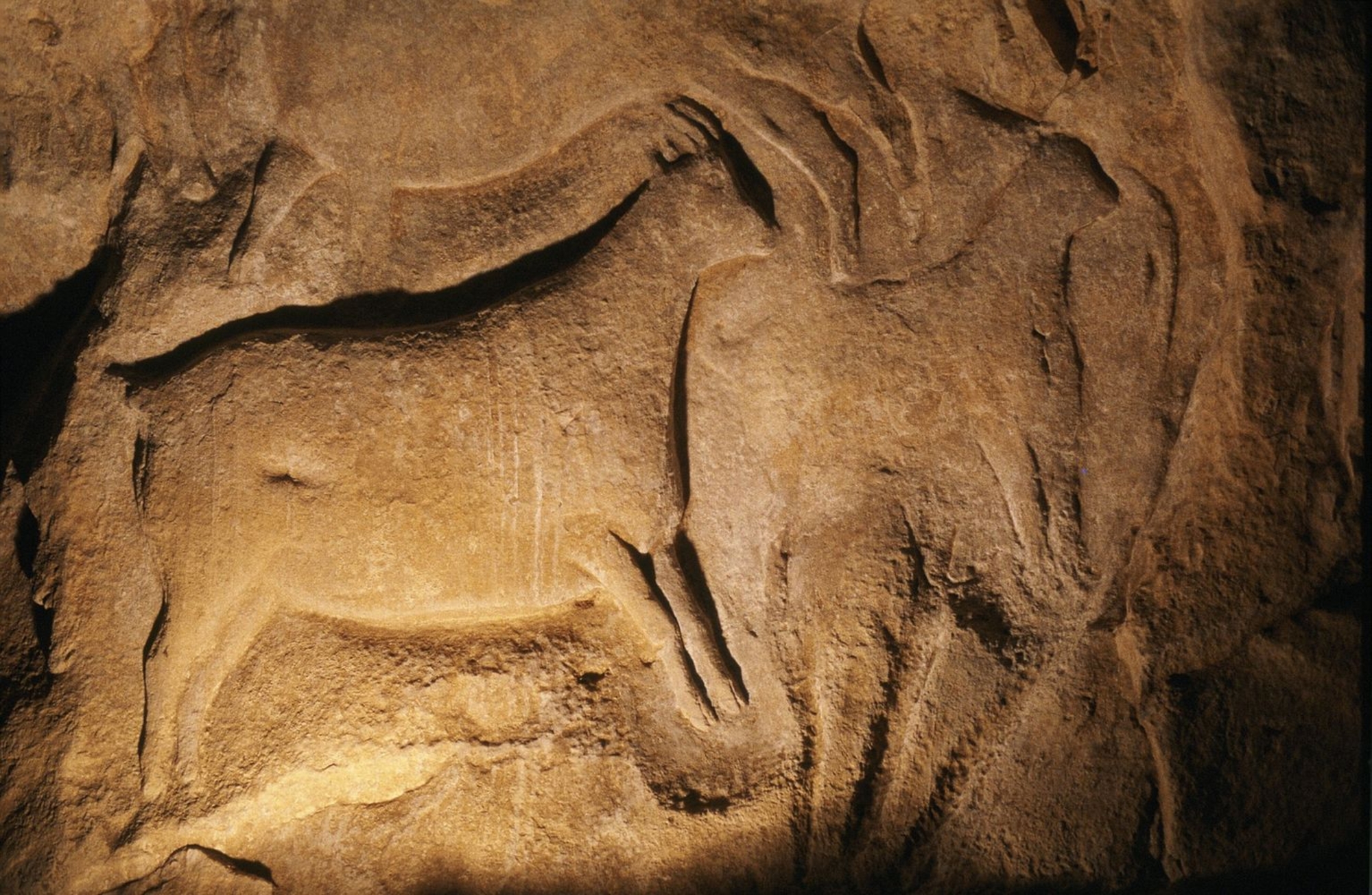
- Home
- Discover the sculptured rock shelters
- Wall sculpture
- A unique assembly
- Solutrean sculpted wall art
The first evidence of monumental wall sculpture appears starting in the Solutrean. However, the largest amount of evidence dates to the Magdalenian: Roc-aux-Sorciers, Cap Blanc, Reverdit, Chaire-à-Calvin, etc. Two Solutrean sites provide a good illustration of these origins.
Laussel
The major Laussel Shelter in the community of Marquay (Dordogne) opens onto the Grande Beune valley, a few hundred metres upstream from the Cap Blanc Shelter.
Excavated by Gaston Lalanne in 1908, the deposit contains the longest stratigraphic sequence in the Périgord, with occupations from every culture in the Upper Palaeolithic (some 25,000 years).
In 1910, five wall sculptures on fallen limestone blocks were found. They include the "Venus with horn", the "playing card", the "Berlin Venus" (since lost), the "Venus with a gridded head" and the "hunter". They have been attributed to the Gravettian period (about 25,000 years BP).
These sculptures were cut from the collapsed blocks to ensure, in particular, their conservation. The "Venus with horn" is currently on display at the Musée d'Aquitaine.
Roc de Sers
The prehistoric site of Roc in the community of Sers (Charente), commonly referred to as Roc de Sers, has yielded the oldest known sculpted frieze to date. Archaeological excavations were carried out in the early twentieth century. The most significant were led by Leon Henri-Martin between 1909 and 1929. The site yielded several habitats beneath shelters and thousands of flint tools specific to the Upper Solutrean (shouldered points and laurel leaf points) and limestone slabs with engravings of animals. Carbon dating of burnt bone (19,230 + 300 years BP) confirms that the site belongs to this culture.
The principal interest of the site consists of a series of limestone blocks belonging to a sculpted wall frieze some ten metres long. The originals, each weighing several hundred kilograms, are now in the Musée d’Archéologie Nationale. In 1951, the discovery of sculptures still fixed to the rock confirmed this hypothesis.
Horses, bison, ibex, deer and birds, as well as two rudimentary human figures and painted signs (dots), make up this exceptional ensemble.
Associated media
Open Media Library

Female figure known as the "Venus with a gridded head"

Human profile known as "the Hunter"

Sculpture known as "the playing card"

Female figure known as the "Berlin Venus"

Sculpted stone blocks from Roc de Sers: two ibex facing each other

